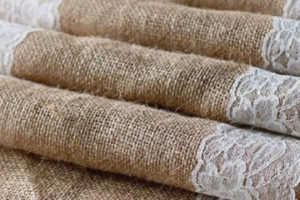Burlap Packaging
The timeless and rocking burlap is back with a big bang . Burlap packaging is on the rise.
Slowly but surely, it is being witnessed – companies are going green with packaging.
The global burlap packaging demand is witnessing an upswing with an increasing pace. Read more on this market.
What is Our Role?
Our collective consciousness for a safer environment is definitely contributing to it – the urgency is palpable.
“In the Los Angeles area alone, 10 metric tons of plastic fragments – like grocery bags, straws, soda bottles are carried into the Pacific Ocean every day” as reported by EcoWatch.
Companies, big or small, are striving in all manners possible to be seen as green and environmentally-friendly.
They are making it count when it comes to their business practices, goals, actions, operations, products, communication and branding.
Going green has become a social responsibility, and to remain relevant in future business environment.
This is true even of households, government agencies and communities.
Because our environment impacts each one of us.
Jute, Burlap, Hessian
Is there any difference between jute, burlap, hessian?
As per Wikipedia’s definition,
“burlap is a woven, rough cloth, made from jute, hemp, or other fiber. It is often found woven into sacks, and used to carry bags of food and other medium-weight objects. This is also known as hessian cloth.”
The terms are used interchangeably – burlap, jute, hessian. It also is known by different names elsewhere – like Crocus in Jamaica.
Jute is the name of the plant. Burlap and hessian are heavy, woven fabric materials, woven with yarns made from fibers of the jute plant.
The earthy, rustic, classy tones of burlap is so alluring.
When it comes to textile packaging, burlap has a number of advantages as compared to the other woven, synthetic materials.
Global Burlap Packaging Market
There are two broad market segments in burlap packaging – on the basis of product type and end-use.
Going by product type, the burlap packaging segment comprises of :
- Burlap bags (or jute bags, gunny bags, hessian bags)
- Sacking
- Yarn
- Ropes etc.
Going by end-use, the market can be classified into:
- Food and beverages
- Agriculture and Farm products
- Building and Construction
- Chemicals and Fertilizers
- Cosmetics and Personal Care
- Industrial
- Other (pouches, photo bags, etc.)
As such, it has a very wide market.

Burlap Packaging
Eco-friendly burlap/jute sacks and bags have found a common place in packaging.
So many wholesalers, manufacturers, industrial companies, commercial enterprises, nurseries, agricultural packers, a growing number of government agencies, institutions are starting to use jute bags.
And it is happening on a global scale.
A Number of Uses
With great designs and functionality, burlap packaging is used in a wide variety of industries:
- Food packaging: nuts (peanuts, hazelnuts, cashews, pecans etc), coffee, dried beans, sugar, cocoa beans, shellfish
- Landscaping: compost bags, manure bags, sandbags etc.
- Agricultural Commodities : for potatoes, sugar, sweet-potatoes, grains, rice, lentils etc.
- Construction: for cement, sand, stones, parts, nuts and bolts, hardware etc.
- Customized Promotional Bags (for businesses, retail, restaurants, shops, groceries etc)
- Retail Shopping Bags
- Specialty bags
- Livestock feed bags
- Textiles: storage of textiles, parts etc.
- Commercial heavy duty storage : for products, items, files, folders, papers, documents etc.
- Mailing bags: jewelry, small parts, documents, gifts etc.
- Specialty bags
Jute bag suppliers generally provide a wide range of products for packaging applications, custom or otherwise.
What Makes Jute Packaging So Special?
Burlap, hessian, jute packaging bags provide functionality, design, versatality and affordability.
They are inexpensive. Very affordable as compared to other synthetic textile packages.
The rugged, coarse, strong nature of fibers with thick weaves and extra reinforcements make them good to use for heavy duty purposes.
They are durable, sturdy and reusable.
The uniqueness and comparative advantage of jute is that it is recyclable, completely natural, renewable, sustainable, eco-friendly, environmentally safe, biodegradable.
Burlap can be easily treated to allow absorption of moisture. It allows airflow which is important for packaging.
Burlap is easily printable. Printed bags are great for branding, marketing and advertising.
They can be effectively used for product recognition.
Burlap is a better substitute for plastics and petroleum-based synthetics. As such, jute shopping bags are being offered by virtually all retailers and businesses.
With custom tagging and sewings, you can do great stuff on your burlap packaging material.
And still retain that chic look.
Conclusion
Disposability of synthetics and plastics has become a scary and out-of-control environmental problem.
Countries all around the globe are trying to take measures and put policy initiatives in place.
But a lot still needs to be done.
Meanwhile, good old burlap will remain strong and its’ place will be unrivaled when it comes to signaling green…sustainable… natural…organic…functional packaging.
Contact USA based Madi Decor for affordable, high quality burlap sacks.

